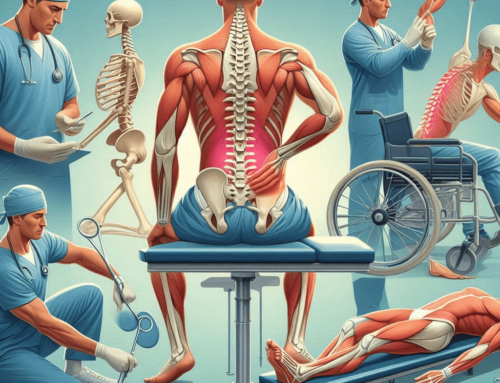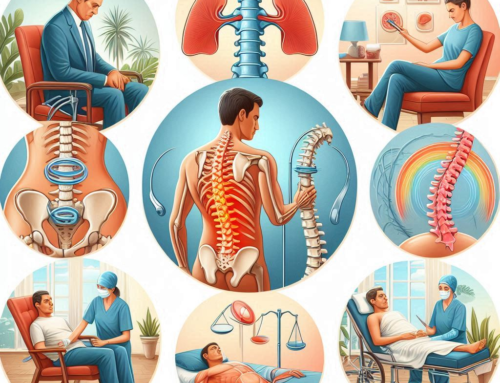Disc herniation, a common spinal condition, occurs when the soft, gel-like center of an intervertebral disc protrudes through the tough outer layer. This comprehensive guide aims to provide a deep understanding of disc herniation, covering its causes, symptoms, and various treatment options to empower individuals with the knowledge needed to navigate this spinal issue.
Decoding Disc Herniation: An Overview
What is Disc Herniation?
Disc herniation, also known as a slipped or ruptured disc, refers to the displacement of the inner disc material beyond its normal position. This can occur in any part of the spine but is most common in the lumbar region.
Causes of Disc Herniation
- Age-Related Wear and Tear: As individuals age, the intervertebral discs lose water content, making them more susceptible to herniation.
- Spinal Degeneration: Conditions like degenerative disc disease can weaken the discs, increasing the risk of herniation.
- Trauma or Injury: Sudden, forceful movements or injuries can lead to disc herniation, especially in the case of accidents or falls.
- Improper Lifting Technique: Lifting heavy objects with improper technique can strain the spine and contribute to disc herniation.
Identifying the Telltale Signs: Symptoms of Disc Herniation
Back Pain and Sciatica
The hallmark symptom of disc herniation is often intense, localized back pain. If the herniated disc compresses a nerve, it can lead to sciatica—a shooting pain that radiates down the leg.
Numbness and Tingling
Nerve compression may cause numbness and tingling sensations in the affected area, contributing to discomfort.
Muscle Weakness
Muscle weakness, particularly in the leg or foot associated with the affected nerve, can occur due to disc herniation.
Changes in Reflexes
In some cases, disc herniation can lead to changes in reflexes, indicating nerve involvement.
Bowel or Bladder Dysfunction
Severe cases of disc herniation, particularly in the lumbar region, may lead to bowel or bladder dysfunction, necessitating immediate medical attention.
Diagnosis and Medical Evaluation
Clinical Assessment
Medical professionals conduct a thorough clinical assessment, evaluating symptoms, medical history, and conducting a physical examination.
Imaging Studies
Diagnostic imaging, such as magnetic resonance imaging (MRI) or computed tomography (CT) scans, is often employed to visualize the extent and location of the herniation.
Treatment Options for Disc Herniation
Non-Surgical Approaches
- Pain Management: Over-the-counter or prescription pain medications help alleviate discomfort associated with disc herniation.
- Physical Therapy: Targeted exercises and stretches can strengthen the muscles supporting the spine and improve flexibility.
- Heat and Cold Therapy: Applying heat or cold packs can provide relief from pain and inflammation.
- Lifestyle Modifications: Avoiding activities that exacerbate symptoms and adopting proper body mechanics can contribute to healing.
Surgical Interventions
- Discectomy: A surgical procedure where the protruding portion of the disc is removed to relieve pressure on the nerves.
- Laminectomy: In some cases, a portion of the vertebra (lamina) may be removed to create more space for the affected nerves.
- Spinal Fusion: Fusion of adjacent vertebrae may be considered to stabilize the spine, especially if multiple discs are involved.
Recovery and Rehabilitation
Physical Therapy Post-Surgery
Rehabilitation through physical therapy is crucial post-surgery to regain strength, flexibility, and functionality.
Gradual Return to Activities
Patients are advised to gradually reintroduce activities, with a focus on preventing re-injury and promoting long-term spinal health.
Also Read Mindful Movement: The Connection Between Yoga, Breathing, and Spinal Wellness
Preventing Disc Herniation: Lifestyle Measures
Proper Lifting Techniques
Educating individuals on proper lifting techniques, including bending at the knees and keeping the back straight, can prevent strain on the spine.
Core Strengthening Exercises
Strengthening the core muscles through targeted exercises provides additional support to the spine, reducing the risk of disc herniation.
Mindful Movement Practices
Incorporating mindful movement practices such as yoga or Pilates can enhance flexibility and promote overall spinal health.
Conclusion: Empowering Spinal Health
Understanding disc herniation empowers individuals to make informed decisions about their spinal health. Whether through preventive measures, non-surgical interventions, or surgical options, there are diverse strategies available to address disc herniation and pave the way for a healthier, more resilient spine. Timely intervention, lifestyle modifications, and a comprehensive approach to recovery contribute to optimal outcomes for individuals navigating disc herniation.
Note: We are also on WhatsApp, LinkedIn, and telegram, to get the latest news updates, Join our Channels. WhatsApp– Click here, to telegram – Click Here, and for LinkedIn– Click Here.





Get Social